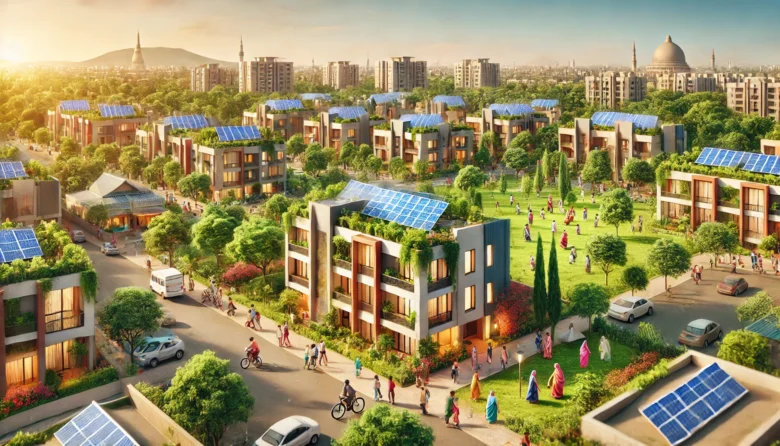Eco-gentrification is a phenomenon that has been making waves in urban communities around the world, including India. This process, which combines ecological improvements with gentrification, often has unintended consequences for local residents. In this blog, we’ll delve into how eco-gentrification affects urban communities, particularly in India.
What is Eco-Gentrification?
Eco-gentrification occurs when green initiatives, such as the creation of parks, bike lanes, and sustainable buildings, lead to an increase in property values and the displacement of long-time residents. While these projects are aimed at making cities more livable and environmentally friendly, they can also make neighborhoods unaffordable for those who have lived there for generations.
The Promise of Green Cities
In India, cities like Bengaluru, Delhi, and Mumbai have been at the forefront of implementing green projects. These initiatives include everything from installing solar panels on rooftops to creating urban forests and improving public transportation. The goal is to reduce pollution, enhance public health, and create a more sustainable urban environment.
However, as these projects are implemented, they can lead to increased property values and rental costs, pushing out lower-income residents. For example, the development of the Lodhi Art District in Delhi has transformed the area into a vibrant hub of culture and sustainability. But this transformation has also led to rising rents and the displacement of local communities.

Who Benefits from Eco-Gentrification?
While eco-gentrification can bring about positive changes, such as improved air quality and increased green spaces, the benefits are not always equitably distributed. Higher-income individuals who can afford the rising costs are often the primary beneficiaries, while lower-income residents may struggle to keep up with the increasing expenses.
In Mumbai, for instance, the development of the Bandra-Kurla Complex (BKC) as a green and sustainable business district has attracted numerous multinational companies and high-income residents. However, this has also resulted in the displacement of many local businesses and residents who can no longer afford to live or work in the area.
The Impact on Local Communities
The displacement of residents due to eco-gentrification can have far-reaching consequences. It often leads to the loss of cultural heritage and community ties, which are integral to the social fabric of urban areas. Long-time residents may find themselves relocated to less desirable areas with fewer amenities and opportunities.
In Bengaluru, the transformation of the Whitefield area into a tech hub has led to significant changes in the local community. Although the area has experienced significant growth in green buildings and tech parks, the increase in property prices has compelled many local residents to relocate. This has disrupted the lives of many families and altered the cultural landscape of the area.
Balancing Sustainability and Inclusivity
To address the challenges of eco-gentrification, it is crucial to find a balance between sustainability and inclusivity. It’s essential for policymakers and urban planners to make sure that green projects do not disadvantage local communities. This can be achieved through measures such as affordable housing policies, community engagement, and inclusive development plans.
In Delhi, the government has initiated the Yamuna Riverfront Development Project, which aims to revitalize the riverfront while ensuring that local communities are not displaced. The project aims to develop a sustainable and inclusive urban environment by involving residents in the planning process and offering affordable housing options.
Learning from Global Examples
India can learn from global examples of cities that have successfully balanced green development with social equity. For instance, Copenhagen in Denmark has implemented green initiatives while maintaining affordable housing for its residents. The city’s approach includes strict rent control measures and subsidies for low-income households, ensuring that everyone can benefit from the ecological improvements.
Moving Forward
As India continues to urbanize and implement green initiatives, it is essential to keep the principles of inclusivity and social equity at the forefront. By doing so, cities can become more sustainable without displacing the communities that make them vibrant and diverse.
Conclusion
Eco-gentrification presents both opportunities and challenges for urban communities in India. While green initiatives can lead to healthier and more sustainable cities, they can also result in the displacement of long-time residents. By adopting inclusive development strategies and involving local communities in the planning process, India can ensure that its cities become both green and equitable.
Author’s Note
Thank you for reading! If you found this blog interesting, consider sharing it with your friends and family. Let’s work together to create a sustainable and inclusive future for our urban communities.
G.C., Ecosociosphere contributor.




